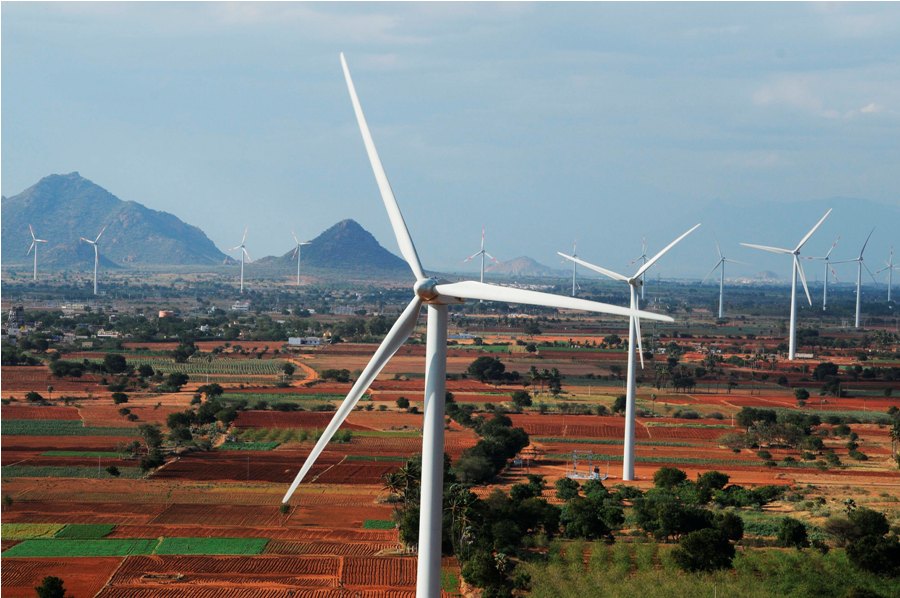Pushing towards more renewable energy sources, and shifting to e-mobility are two areas in the energy space that India needs to seriously pursue, according to Cedrik Neike, CEO of Siemens Smart Infrastructure.
Also a member of the Managing Board of Siemens AG, and responsible for India, Cedrik Neike made these observations while responding to media queries at the virtual Grid Edge Summit Media Roundtable, on June 16, 2020. Neike, at the event, was presenting Siemens’ “Grid Edge” solutions. The grid edge is basically the interface between the grid and the end-consumer. (Details on Grid Edge presented ahead)
Elaborating on his views on India, Cedrik Neike observed that India significantly relies on coal. Though the country is trying to make its coal-fired power plants cleaner, it is pushing and needs to push harder in the renewables space. Neike gave the instance of Germany which also, at one point in time, was reliant on coal.
However, it lowered its coal dependence; was one of the first country to exit nuclear power generation; and is now aggressively pursuing renewable energy. In fact, as he pointed, there have been days in recent history where over half of the country’s electricity has come from renewable energy sources.
“We are not only producing green energy in India but also distributing it.”
For Siemens, Neike said that India represented one of the largest markets in the world with respect to wind energy. Siemens not only supplies wind turbine generators to India (through 2017-incorporated Siemens Gamesa Renewable Energy, representing the unification of the Spanish company Gamesa Corporacion and Siemens Wind Power) but is also involved in the transmission and distribution grid. “We are not only producing green energy but also distributing it,” observed Cedrik Neike.
“I think India definitely has to go in the direction of e-mobility.”
Regarding e-mobility, Neike saw immense opportunity in three-wheeler public transport vehicles, in cities like Mumbai and Delhi, going electric. Popularly called “rickshaws”, their conversion into e-vehicles can achieve overall good, not just in terms of mitigating air pollution. In fact, Siemens in India, is researching on the type of charging infrastructure that is best suited for the purpose, noted Neike. “I think India definitely has to go in the direction of e-mobility,” summed up Cedrik Neike.
“India is very close to my heart and I think India has a huge opportunity.”
Speaking of renewables, the CEO of Siemens Smart Infrastructure asserted that Siemens in India was present across the entire value chain comprising electricity generation, transmission, distribution and even energy storage. Neike emphasized on the fact that Siemens had significant localization in India. “We are providing a large part of this value chain in India. The good news is that a lot of this is also being produced in India.” Neike was also appreciative of the fact that Siemens’ manufacturing activity in India is supported by a large number of R&D centres.
“India is very close to my heart and I think India has a huge opportunity,” was the opening remark of Cedrik Neike before he took to replying to India-centric questions from the media.
The Grid Edge: Definition and Significance
The original definition of the grid edge was “the interface between the grid and the end-consumer or final customer”. Today, the meaning of the term has become broader and refers to the many connected technologies that exist between the energy supply side (grid) and the energy demand side (building, industry, and consumer).
Grid Edge even covers ICT technology such as smart meters, energy management systems and specific solutions such as eMobility charging and battery storage.
These technologies include those for local consumption and production as well as for the storage of electrical energy. Beside the primary technology for coupling electricity with other forms of energy to satisfy the need for temperature, mobility, mechanical power, etc. it also covers ICT technology such as smart meters, energy management systems and specific solutions such as eMobility charging and battery storage.
Innovation in both hardware and software can be found at the Grid Edge.
Innovation in both hardware and software can be found at the grid edge. Hardware includes solar panels, advanced metering infrastructure, smart inverters, energy storage systems, smart thermostats, smart appliances and building controls. Software includes automated price-responsive demand response, real-time grid optimization, data analytics, and integrated distribution system planning systems.
Some grid users today already have a net-zero energy system.
It is at the grid edge where a significant change is taking place. Historical power systems had evolved as highly centralized top-down systems, connecting large power stations to a passive demand-side on the edge of this grid. Today the grid edge becomes active and consumers become prosumers by feeding power into the grid themselves or managing their decentral system with their own storage. As a result, some grid users already have a net-zero energy system, however, the grid is still required as backup and to trade electricity with other grid users.

